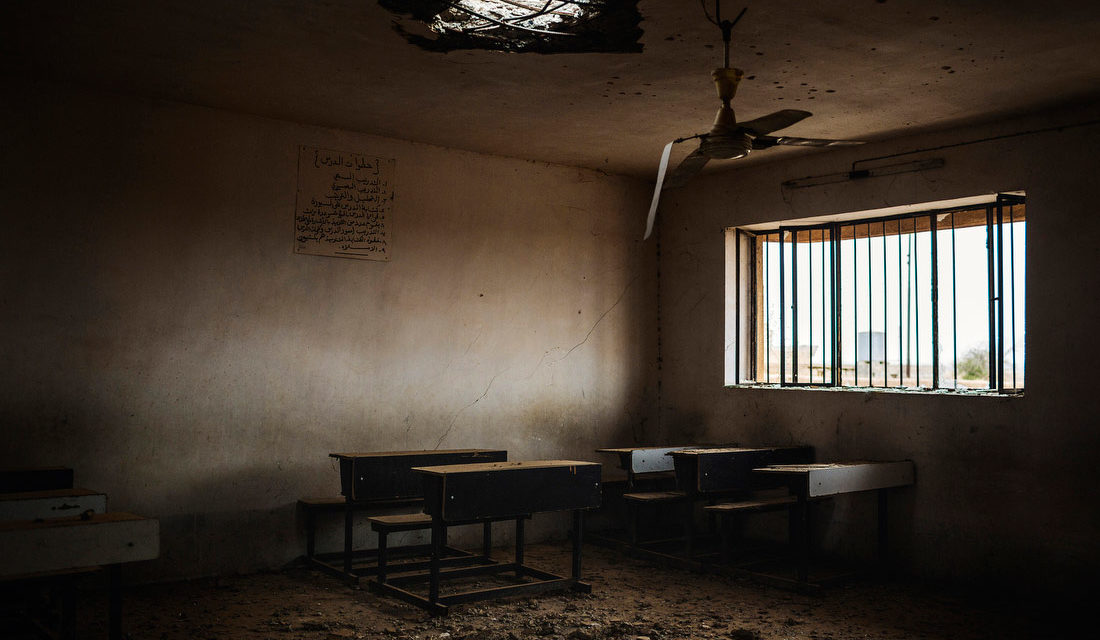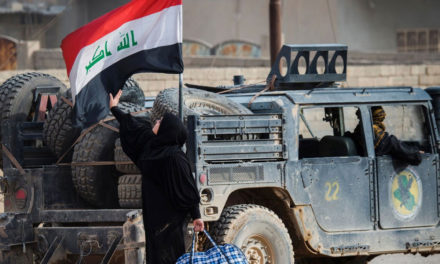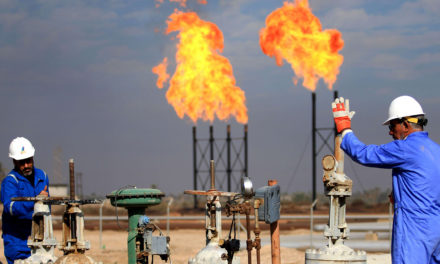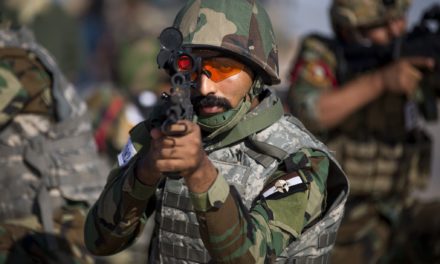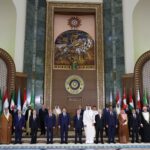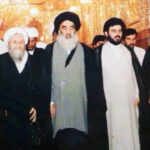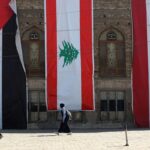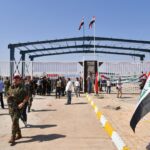(Damage from an airstrike is seen at an abandoned school in northern Iraq. Photo: Diego Ibarra Sánchez/CNN)
Beginning in early 2014, the so called Islamic State of Iraq and Syria (Da’ish) seized swaths of territory across Iraq and Syria and formed a fixed state-like identity. Under the leadership of Abu Bakr Al-Baghdadi, Da’ish grew rapidly, and by 2015, Da’ish territory was similar in size to that of the United Kingdom. With a 2015 income of $6 billion, Da’ish also became the wealthiest terror group in history. Driven by its dual goals to promote an original and literal interpretation of the Quran and to run a caliphate based on “the prophetic methodology”, Da’ish used its income to build state-like institutions. Da’ish understood the critical role that education plays in any state-building project, and the group invested heavily in educational institutions. Da’ish used education as a major vehicle for its project.
Unlike western education, where curricula are often designed to align with the labor markets and operate on the premise of democratic citizenship and secularism, Da’ish used education to religiously indoctrinate its pupils. Splitting the curricula between sharia law, divine-based science, and military training, Da’ish focused its efforts on its two capital cities, Raqqa, Syria, and Mosul, Iraq. Led by Da’ish’s Diwan of Education, an establishment run similar to a state’s ministry of education, the group established a system of education that set out to radicalize millions of Syrian and Iraqi citizens. The group reformed educational curricula, printed academic materials, and attempted to strictly enforce Salafi jurisprudence across the education system.
The relationship between Da’ish and education policy is unique in that Da’ish developed a state-like government and invested heavily in the institutions of education. There were important developments and relationships between Da’ish and academic material, curricula, higher education, and violence. An analysis and overview of this education system and violence provide valuable insight into the inner workings of Da’ish.
In October 2013, in Raqqa, Syria, the school year began with a newly formed education administration. The former education system, led by the Syrian government, which openly taught subjects such as nationalism, secularism, and even democracy, was destroyed. According to Da’ish, Syria’s education was considered an education for infidels (unbelievers), and being educated under the former regimes of Syria and Iraq was worse than death. In Raqqa, Da’ish established education committees to reform curricula and align it with Da’ish’s religious interpretations. Students were forced to study subjects such as sharia law and military tactics.
Da’ish’s territorial expansion culminated in June 2014 with the capture of Mosul, Iraq. Compared to a relatively small city of Raqqa, Syria, Mosul was home to an estimated 3 million people. Mosul was known for its civil society and its education system, which included over 2,700 schools and institutes of higher education. Da’ish quickly took over this system, cutting schools off from Iraq’s central government and seizing the regionally famous University of Mosul. The group’s education minister, Khaled Jamil Muhammad, became the University of Mosul’s president, overseeing educational reform at the university and at schools in the region.
In Raqqa, Da’ish initially banned academic subjects that had formerly been taught, including science and mathematics, and they issued new Saudi textbooks that focused on Islamic manners and Arabic. In October 2015, Da’ish began to print and issue their own textbooks, with one textbook about creed becoming their main instructional source. This textbook instructed students to memorize verses from the Quran and ensure they understood the responsibilities of proselytization. For traditional academic subjects, other textbooks opened with the same message in their introductions: education is based upon the Quran’s methodology, and western capitalism and eastern socialism are both corrupt. These textbooks were clearly used to indoctrinate students, spread radicalism, and encourage violence. According to one father, his son’s fourth-grade textbooks were filled with images and symbols of Da’ish’s war, including pictures of tanks, bombs, and machine guns. Another excerpt from a math textbook issued by Da’ish gives further insight into the group’s militaristic literature: one of its problems reads, “If the Islamic state has 275,220 heroes in battle and the unbelievers have 356,230, who has more soldiers?”
In addition to the academic content in Da’ish textbooks, the textbooks included pedagogical tools to assist teachers in their work. Books included framing strategies and lesson plans, along with appropriate discussion questions. Visuals and maps were also included to help teachers increase the level of student engagement.
In 2014, Da’ish reopened universities within its territories. The most notable university, the University of Mosul, was reopened as an Islamic institution after the group closed academic faculties that were deemed “haram” or sinful. For Sharia-related reasons, the departments of philosophy, archaeology, and political science were shut down. At the University of Mosul, Da’ish blew up laboratories from some of the departments it disagreed with. To align with Da’ish’s statehood goals, Minister of Education Khaled Jamil Muhammad held meetings with lecturers and administrators at the University of Mosul. The priority in higher education shifted focus to align with Da’ish’s needs, and it focused heavily on medical education. Shortly after, Da’ish’s Diwan of Education established a faculty of medicine in Raqqa. Educational consultants also suggested Asian language training, because hundreds of millions of Muslims live across Asia. Across all subjects, in May 2014, Da’ish announced that students needed to join Da’ish ranks after graduating from university.
Da’ish strictly enforced its education system in Iraq and Syria. Many teachers who disagreed with Da’ish reform were tortured and killed, especially if they refused to teach Da’ish’s curriculum. Between 2013 and 2017, Da’ish killed over 100 education personnel in Iraq alone. Students were also the target of abductions and killings in both Iraq and Syria. On the contrary, for students who conformed to Da’ish’s educational project, there were extra military trainings that became mandatory.
Da’ish’s plan to reform education in Raqqa, Mosul, and other cities and towns within its territory were ambitious. In just four years, the area of conflict and harsh living conditions under Da’ish forced millions of citizens to flee to Turkey, Southern Iraq and Iraqi Kurdistan. There were, however, thousands of students and teachers who participated in Da’ish’s education system that promoted jihadism, violence, and sharia law. To analyze its effectiveness, there needs to be further research into how Da’ish’s students were affected, ideologically, after completing their education. It is important to understand the extent to which students are potentially violent. Due to instability in the region, further research on the effectiveness of Da’ish’s educational reforms is difficult to perform.
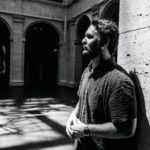
James Aird
James Aird worked in the Kurdistan Region of Iraq for 15 months and is currently an M.Ed student at Harvard University. He focuses on education policy.

